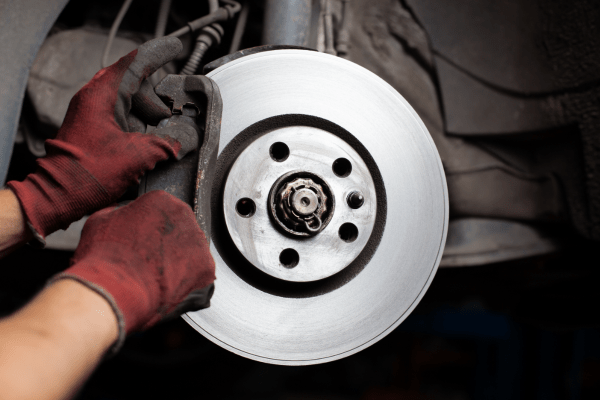Extending the lifespan of your brake pads is not only cost-effective but also crucial for your safety on the road. Here are several tips and practices to help you make your brake pads last longer:
1. Brake Smoothly: One of the most effective ways to extend the life of your brake pads is to use them smoothly and gradually. Avoid sudden or aggressive braking whenever possible. Slamming on the brakes generates excessive heat and friction, which can wear out the pads quickly. Instead, anticipate stops and apply gradual pressure to the brake pedal.
2. Maintain a Safe Following Distance: Keeping a safe following distance between your vehicle and the one in front of you allows you to react more calmly to traffic conditions. This means you won’t need to brake suddenly as often, reducing the wear and tear on your brake pads.
3. Downshift on Downgrades: When driving a vehicle with a manual transmission, consider downshifting on steep downhill slopes instead of relying solely on your brakes to control speed. Downshifting helps distribute the braking load between the transmission and the brake pads, reducing pad wear.
4. Brake Fluid Maintenance: Regularly check your brake fluid level and quality. Brake fluid can become contaminated or deteriorate over time, affecting brake performance. Ensure your brake fluid is clean and at the recommended level. If it’s discolored or has a low level, consult your vehicle’s manual for instructions on changing it or take it to a professional mechanic.
5. Use Engine Braking: If your vehicle is equipped with an automatic transmission or has a manual mode, use engine braking when descending steep hills or slowing down. Engine braking reduces the reliance on the brakes and can help extend pad life.
6. Avoid Overloading Your Vehicle: Overloading your vehicle places additional stress on the braking system. Excess weight can make it more challenging to slow down and stop, leading to increased wear on the brake pads. Follow your vehicle’s recommended weight limits to prevent unnecessary strain on your brakes.
7. Brake Pad Material Selection: When it’s time to replace your brake pads, consider the type of pads you choose. There are various brake pad materials available, each with its characteristics. Some may be more durable than others, so consult with a mechanic to select pads that align with your driving habits and needs.
8. Regular Inspections: Periodically inspect your brake pads for wear. Most brake pads have a wear indicator that makes a high-pitched squealing noise when the pads are worn down. If you hear this sound, it’s time to replace the pads. Additionally, have your brakes professionally inspected during routine maintenance to catch any issues early and ensure optimal performance.
9. Avoid Riding the Brakes: Some drivers have a habit of resting their foot on the brake pedal, causing the brakes to engage slightly even when not needed. This can create unnecessary friction and wear on the brake pads. Keep your foot off the brake pedal when not actively braking.
10. Quality Brakes and Installation: When it’s time to replace your brake pads, invest in quality brake components and professional installation. Quality pads may cost more upfront, but they often last longer and provide better stopping performance.
By following these practices and being mindful of how you use your brakes, you can significantly extend the lifespan of your brake pads. Not only will this save you money on maintenance and replacement costs, but it will also contribute to safer driving by ensuring your brakes are in good working condition when you need them most.

